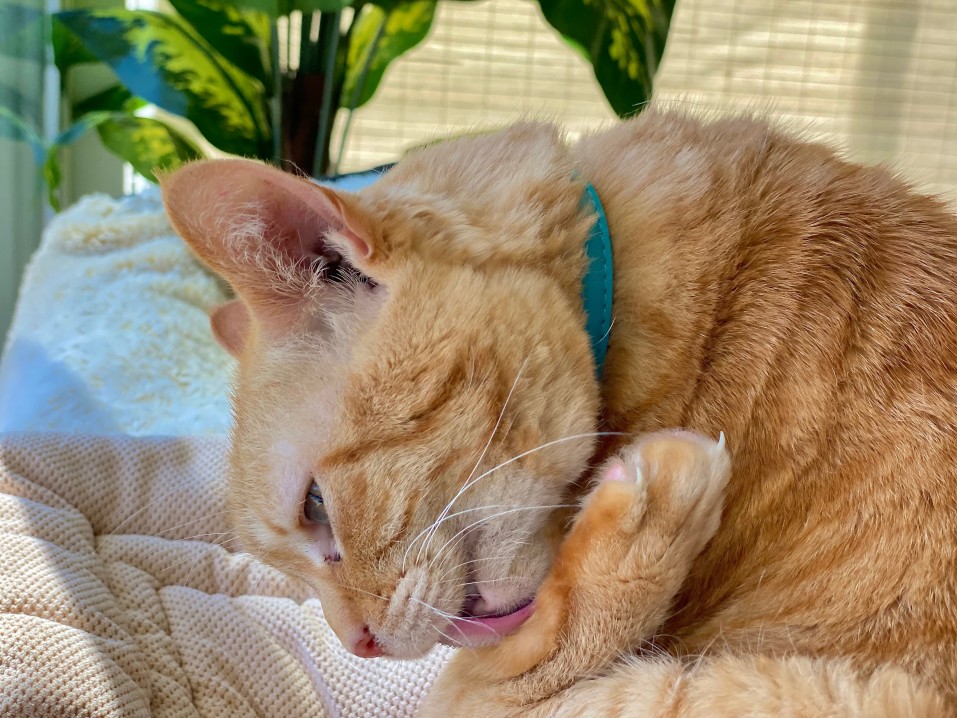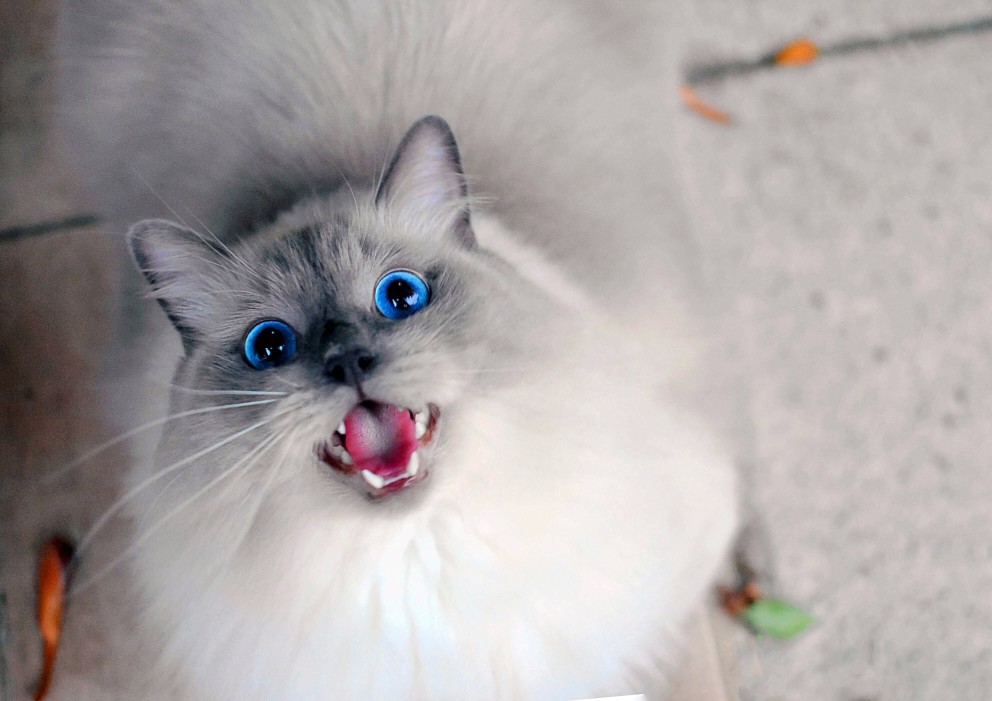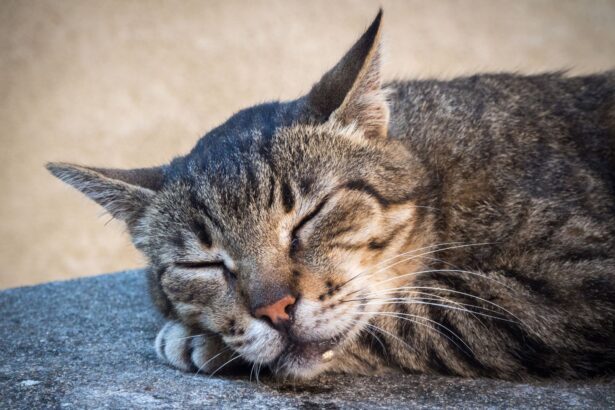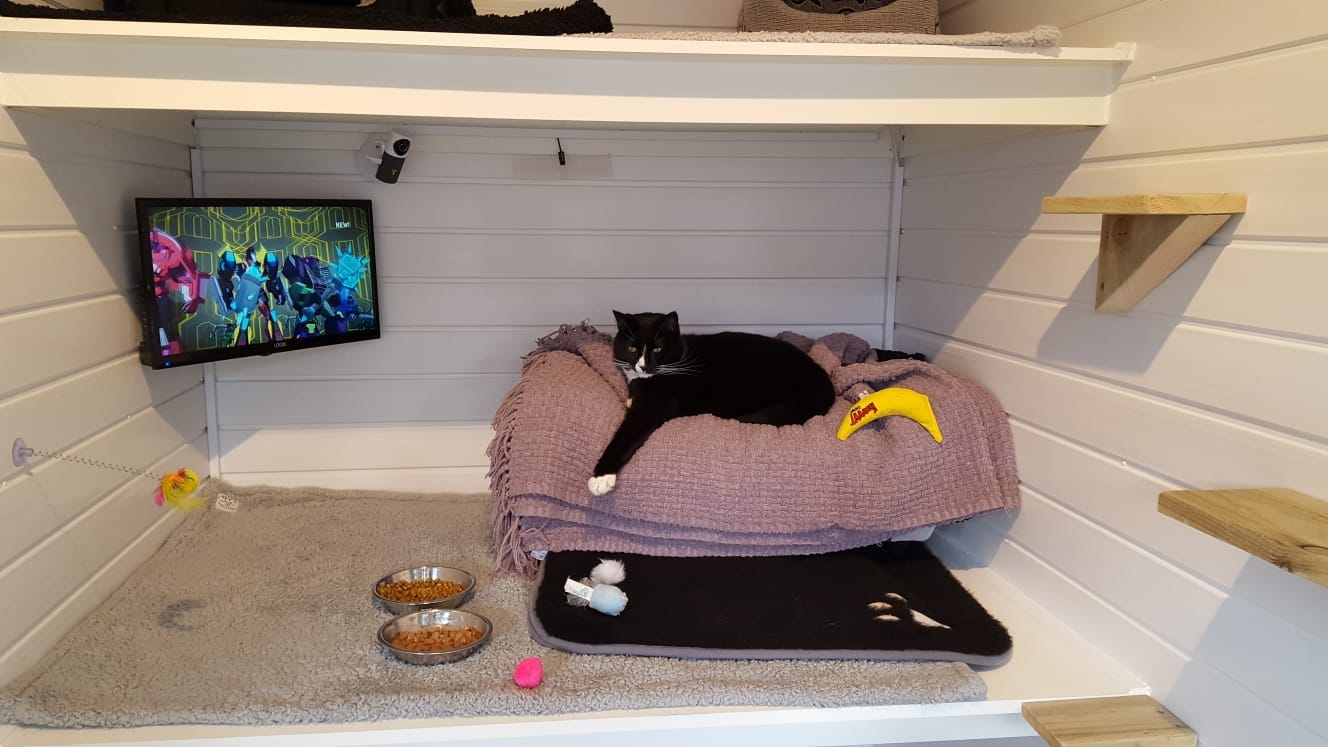Sometimes cats behave in ways that surprise us. Not all of them are a sign that something is wrong, but there are a few that can hide a health problem. Such is the case with stereotypies in cats. You know they are? We explain everything in this article.
What are stereotypies in cats?
Stereotypies in cats are repetitive behaviors that felines adopt, seemingly without purpose. These behaviors are generally associated with emotional problems, such as stress or anxiety.
Like stereotypies in dogs, they are also a clear indication of a lack of well-being in cats.
In addition to the above, professionals also explain that stereotyping can be the result of central nervous system dysfunction.
Classification of stereotypies
Felines are highly intelligent, affectionate and sensitive animals. They don’t cope well with changes in their environment, stress or being ignored when they need our attention. As a result, stereotypies may occur.
If this happens, what the owner should never think is that the animal is using these attitudes to punish him. Cat stereotyping is a reflection of something that needs to be resolved as soon as possible.
Stereotypes vary widely, depending on the animal and the situation that triggered it.
Types of stereotypies in cats
In general, stereotypies can be classified into 4 groups:
- Self-directed: this is when the feline self-inflicts damage, such as tearing its fur, biting itself, etc.
- Locomotives: some examples are the repetition of short runs, jerks or very sudden jumps.
- Oral: biting, licking or eating all kinds of objects.
- Vocalisations: constant mewing or crying.
Common stereotypies in cats
Among the most common feline stereotypies are the following.
Chewing tissue
Occasionally, a cat may fall in love with a blanket, sock or sheet and bite it. This is very dangerous, because if he manages to break and fray it, he could swallow part of the fabric. This would cause digestive problems.
Kneading fabrics
It’s also common for him to knead these tissues compulsively with his paws. This stereotypy is usually caused by very early weaning.
Constant licking

We know that grooming cats is a very important task for them. However, it’s not a good sign that they groom each other very often. One of the most common stereotypes in cats is repeated, uncontrolled licking, licking the same area of the body that has already been cleaned.
This can lead to hair loss in this area, as well as injuries and other skin problems.
Hyperesthesia
It’s a set of symptoms that appear in animals and consist of behavioral changes and muscular contractions that are not normal.
In reality, these types of behavior or contractions produced in isolation are normal, but with repetition they become stereotypes.
Chasing its tail
This is another of the most common cat stereotypes. It’s normal for a kitten to chase its tail as part of its recognition game. In other words, the little kitten is discovering the world, and his tail is something that can attract his attention.
However, it is not normal for a cat who is no longer a baby to compulsively chase its tail.
When do stereotypies appear in cats?
These repetitive, aimless behaviors can appear at any time in a cat’s life, regardless of breed or sex.
The biggest influencing factor is the environment in which they were raised and live, as well as the characteristics of their daily lives.
Causes of stereotypy in cats
Some of the most common causes of stereotypy in cats are :
- Feline stress
- Anxiety
- Boredom
- Loneliness
- Lack of socialization
- The arrival of a new member of the family, whether human or not. For example, if appropriate measures are not taken to get a cat to accept a new dog in the house, stereotypies may appear in the cat.
How to treat stereotypy in cats
To help your pet with stereotyping, the first thing to do is to find out what triggered it, as this is the main problem to be solved.
In addition to this, if the cat has suffered physical damage as a result of repetitive behavior, a veterinarian must check its injuries and establish the appropriate treatment to heal them.
Among the most important considerations for avoiding or correcting stereotypes are :
- Provide adequate environmental enrichment for cats at home.
- Take care of his hygiene and diet.
- If there’s more than one pet in the house, each one should have its own space and belongings.
- Play with the cat several times a day.
- Give your cat the right toys. Increase their complexity little by little to stimulate them mentally.
- Don’t yell at him, abuse him or punish him.
- Avoid leaving the cat alone for several days.
- Do not play music or television at very high volume in the home.
- Only stroke him if he’s receptive.
If the repetitive behaviors don’t stop, then it’s advisable to see a feline ethologist to help you put a stop to them.
Stereotypies in cats must be taken seriously. These are not fun behaviors or something to overlook. Your pet’s health is at stake!







